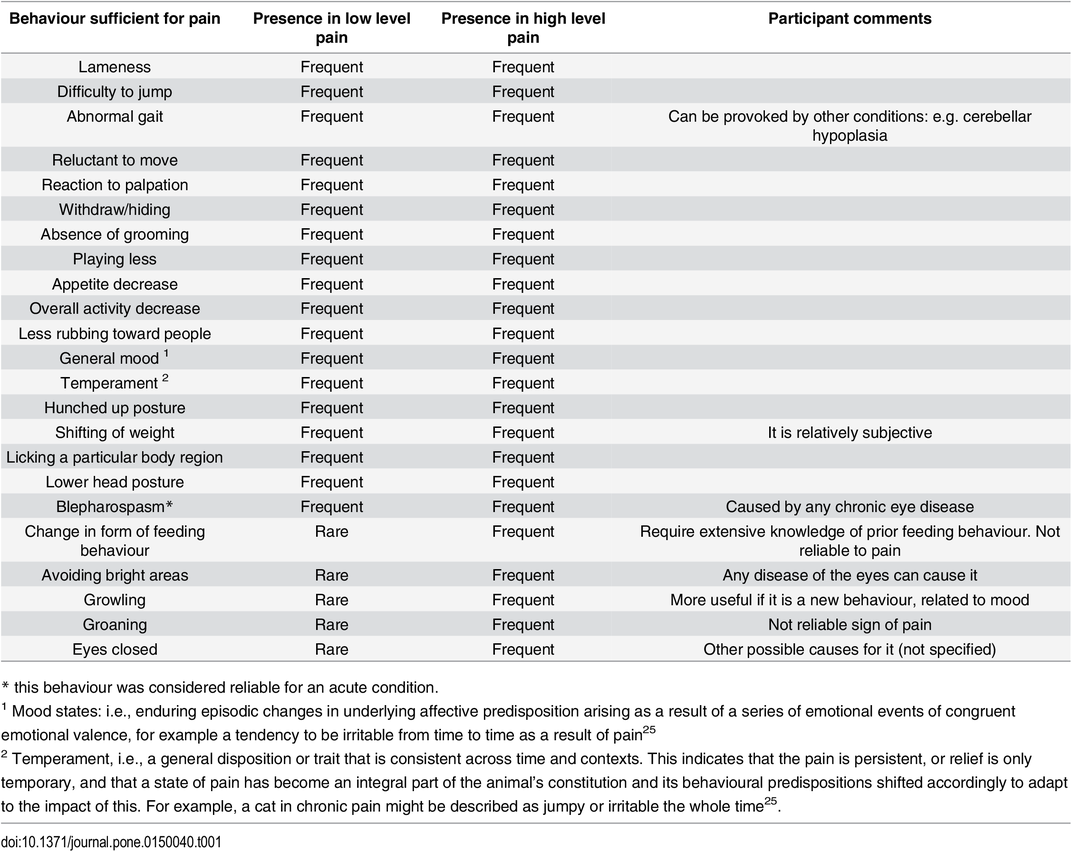How to Tell if Fluffy Is in Pain, According to the Experts
A new study identifies 25 ways to tell if your kitty isn’t feeling well
/https://tf-cmsv2-smithsonianmag-media.s3.amazonaws.com/filer/ab/8a/ab8ace93-c3d5-4522-ba9b-f236492f30aa/42-77631776.jpg)
Cats may be adorable little murderbeasts with ninja-like agility and swords for fingers, but they’re not immune to pain. But judging pain in cats, is often near impossible.
Cats can behave erratically at the best of times, making it tough for their owners to detect injuries, sickness, or other pain. Thankfully for cat lovers, a panel of 19 cat experts from around the world recently gathered to assemble a set of telltale signs that Fluffy is hurting.
The panel compiled 25 behaviors which were published recently in the journal PLOS One that could help you figure out whether your cat is just being weird or if the erratic behaviors might be a sign of something more serious.
The behaviors, which include a lack of grooming, not wanting to move, and hiding are each seemingly small things on their own, but together could indicate that your cat needs a checkup, Daniel Oberhaus writes for Motherboard.
“Both owners and veterinarians are clearly able to recognize many behavioral changes in cats which relate to pain,” Daniel Mills, study co-author and professor of veterinary behavioral medicine at the United Kingdom’s University of Lincoln, said in a statement. “However, owners may not always recognize the clinical relevance of what they see. We hope that having an agreed list of more objective criteria, which relates to specific signs of pain, could improve the ability of both owners and vets to recognize it.”
According to Mills, this paper is the first time that behavioral experts have been able to nail down these behaviors. Funded by the British cat charity Feline Friends, the study analyzed an initial list of 91 different behaviors, narrowing it down to 25 through a process of categorization to judge how often the behaviors were exhibited by sick or injured cats, Rebecca Flood writes for The Independent.
“Cats are notorious for not showing that they are in pain, and the more that we can find out what the signals are, then the sooner we can get them to the vets for diagnosis and treatment,” Feline Friends’ chairman, Caroline Fawcett, said in a statement.
There is still some variation on how much pain a cat can be in before it shows these symptoms. Some of the indicators, like a decrease in appetite, being grumpier than usual, and not grooming, can show that your cat is in some amount of pain. Meanwhile, avoiding bright lights and groaning or growling indicate that Fluffy is hurting pretty badly. Others, like hissing or trying to scratch you could show some pain, but the researchers determined that those behaviors depend too much on a cat’s personality to tell whether it is a universal sign of pain, Flood writes.
Keeping an eye out for these behaviors can help cat owners know when it’s time to take a trip to the vet, but for Mills the list is just a start. He hopes that this list will be a foundations for future studies into how cats express pain, especially in their faces, Oberhaus writes.
